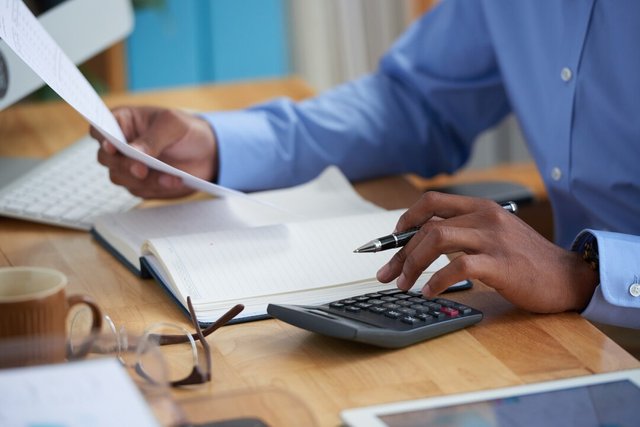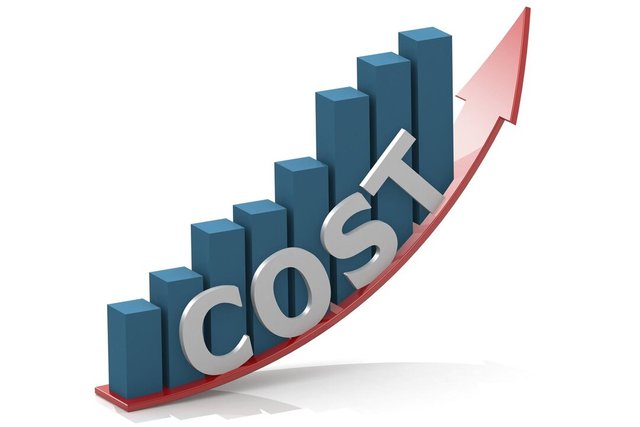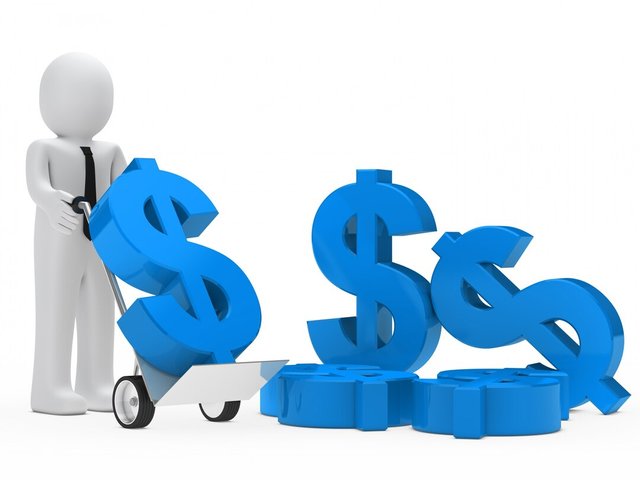SLC | S21W2 | Costs for Entrepreneurs - Cost Elements.
Introduction |
|---|
In order to make better financial decisions and set strategic goals, it’s important you understand cost. In this episode 2 on Steemit learning challenge, I will be covering the relationship between cost and financial accounting and other aspects of cost elements.
Let me invite, @adachukwu, @etette and @joymm to participate in the challenge.
The Relationship Between Costs and Financial Accounting |
|---|

On daily basis, we try to track our income and expenses at home in order to be able to make smart spending decisions, same thing applies in businesses. In business, cost and financial accounting are important tools that help to manage scarce resources, maintain profit and to plan for the future. I’ll be explaining how accounting and cost, complement each other.
- Recording Where Money Goes
As a business owner, you use financial account to take record of every cost you have made whether it’s related to production or general operations. That way you can track how much you are spending and on what, identify opportunities to cut unnecessary expenses and give you prior knowledge on areas you’re likely to spend more.
- Setting a Spending Plan
With financial accounting, you don’t spend unnecessarily because you are on a planned budget that allocate enough resources to cover all areas and avoid running out of money mid-month. For instance, as a person into fashion, I can set money aside on a strict budget to spend on seasonal fabric, knowing fully, that I will need that particular material in large quantity at a particular period of time. By planning effectively, I’m making sure my business never run out of cash
- List Deciding on Prices
Every business man is out there to make profit and for that to be obtainable, he must charge prices that covers cost and still leaves room for profit. This can only be attainable with financial accounting because it’s has the detailed breakdown of cost needed to set a fair price for your product or services without overpricing or underpricing.
Both cost and financial accounting provides business the needed visibility and control over its finances.
Define the difference between fixed and variable costs, with examples. |
|---|
Fixed cost: as the name implies, fixed cost remains constant. They never change no matter how many goods you produce and must be paid whether you sell anything or not. For instance, Whether you make profit in your businesses or not, you must pay rent to retain your shop space, salaries to your staff and insurance regardless of business activity levels.
Variable cost is the opposite of fixed cost. Cost fluctuate with the level of production. As the production increases, the higher the cost becomes because they are directly connected to volume of the goods produced.
Examples:
- Direct labor: If staffs are paid base on amount of shirts they make, the cost of labor will increase with the amount of shirts they produce.
- Raw materials: same principle applies here. Fabric cost goes higher as more shirts are made.
- Packaging: if the business ships each shirt in individual packages, the cost of packages increases with each product sold.

In a real or fictional scenario, identify cost elements in manufacturing a product or providing a service. |
|---|
Mr redefined is a fashion designer who makes both men and women clothings and I’ll be give you a breakdown of the several cost elements involved in producing a female wear for a client.
Direct Materials
Materials he will need to make each female wears
- Fabric
- Thread
- Zippers
- Button
- Gum stay.
Each material listed here will be directly used in making a female wear and might even increase or decrease depending on the style of cloth or number of clothes produced by Mr redefined.
Direct Labor
Labor cost for each staff involved in making the female clothes.
- Pattern maker
- Tailors
Cost in direct labor can also vary depending on the style or quantity of female clothes been produced.
Indirect Costs (Overhead Costs)
Basic sewing supplies like measuring tape, scissors needles aid in the production of a female wear but not directly tied to a particular cloth.
Indirect Labor could be manager or supervisor that oversee the entire staff and ensures the business grows. We also have cashiers , secretaries etc in this category.
Other Overhead Costs include:
- Utilities like electricity to power the industrial sewing machines, water and light.
- Rent to keep the shop space.
- Maintenance of the sewing machines, weaving machines and other equipments
- Marketing your products on different media platforms for a wider reach.
Total Cost Per Dress
By understanding each of the cost elements, it will be easier for Mr redefined to calculate the total cost for each female wear he makes by adding up direct materials and direct labor to get base production cost. As for the indirect cost, a portion of it can be allocated to each dress. This will make it easier to set a fair price that won’t only cover cost and guarantee a profit.
For the company Steemians |
|---|
Let’s break down the cost of production in steemian company into 3 different parts which includes direct cost, indirect cost and non manufacturing cost

- direct cost
As we all know, these are cost directly linked to the making of the product :
Direct Raw Material: 130
Direct Labor: 100
Total Direct Costs = 130 + 100 = 230
- Indirect Costs
This cost are necessary in production process but not directly tied to it.
Plant Manager: 65
Building Maintenance: 50
Manufacturing Supplies: 210
Plant and Machinery Depreciation: 25
Utilities: 35
Plant Insurance and Taxes: 70
Total Indirect Costs = 65 + 50 + 210 + 25 + 35 + 70 = 455
- Non-Manufacturing Costs
These expenses are incurred in order business functions like administrative tasks or distribution, rather than in production.
Delivery Expenses: 70
Sales Commissions: 65
Sales and Administrative Expenses: 80
Distribution Equipment Maintenance: 65
Advertising: 20
Total Non-Manufacturing Costs = 70 + 65 + 80 + 65 + 20 = 300
Direct cost
| Items | cost |
|---|---|
| Direct raw materials | 130 |
| Direct labor | 100 |
| Total | 230 |
Indirect cost
| Items | cost |
|---|---|
| Plant manager | 65 |
| building maintenance | 50 |
| manufacturing supply | 210 |
| Plants and machinery depreciation | 25 |
| Utilities | 35 |
| Plant insurance and taxes | 70 |
| Total | 454 |
Non manufacturing cost
| Items | cost |
|---|---|
| Delivery expenses | 70 |
| Sales commission | 65 |
| Sales and administrative expenses | 80 |
| Distribution equipment maintenance | 65 |
| advertising | 20 |
| Total | 300 |
Summary
Total Direct Costs: 230
Total Indirect Costs: 455
Total Non-Manufacturing Costs: 300
Greetings @sbamsone
1.- Although you have roughly explained the relationship between costs and financial accounting, we would have liked you to explain the way in which costs become an important source of information for finance, and their respective reports.
2.- You have pointed out the difference between fixed and variable costs, giving examples of each of them, and bringing them to reality with the manufacture of shirts.
3.- You have identified the cost elements in the manufacture of garments, segregating correctly each of the cost elements and explaining in detail each one of them.
4.- You have classified each of the costs incurred by the Steemians company, identifying each group to which they belong, presenting their behavior.
Thanks for joining the contest